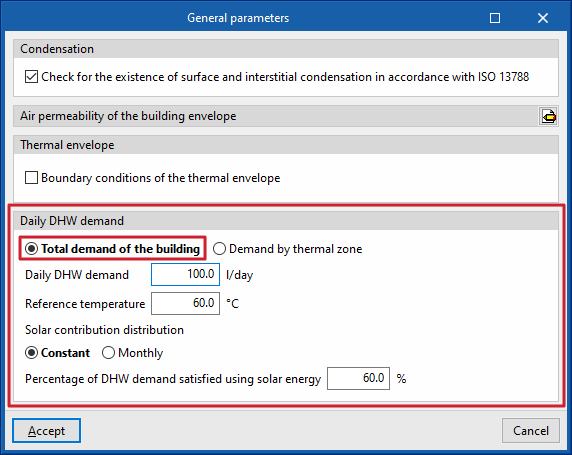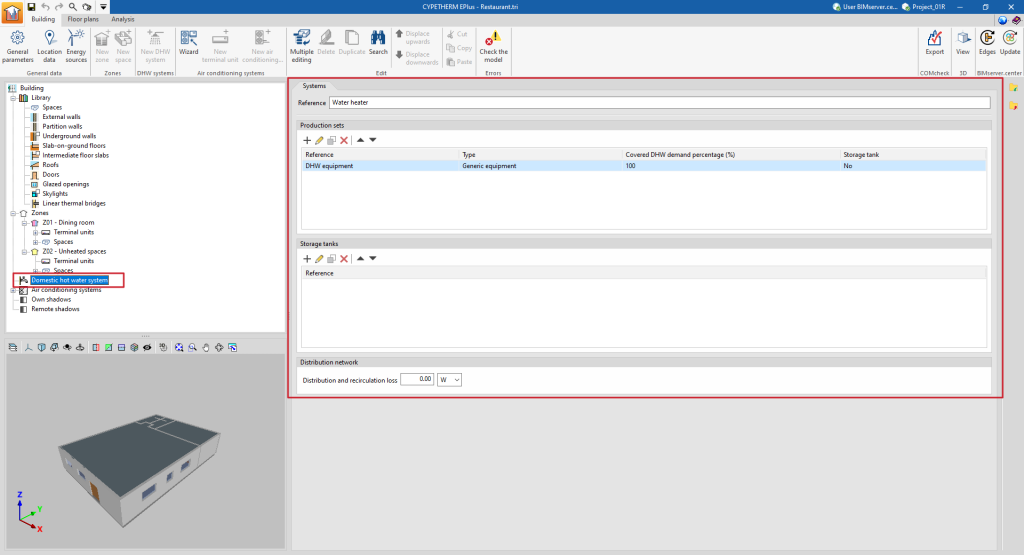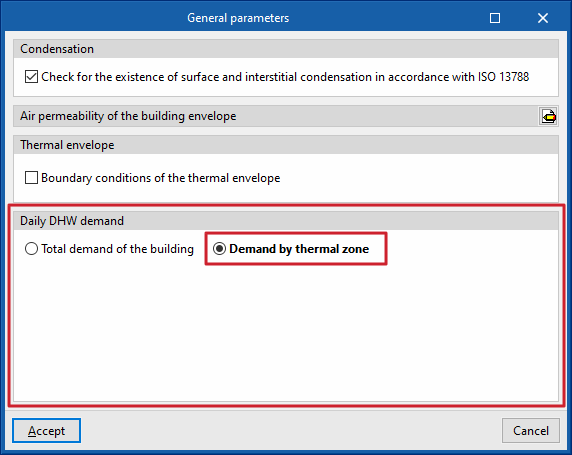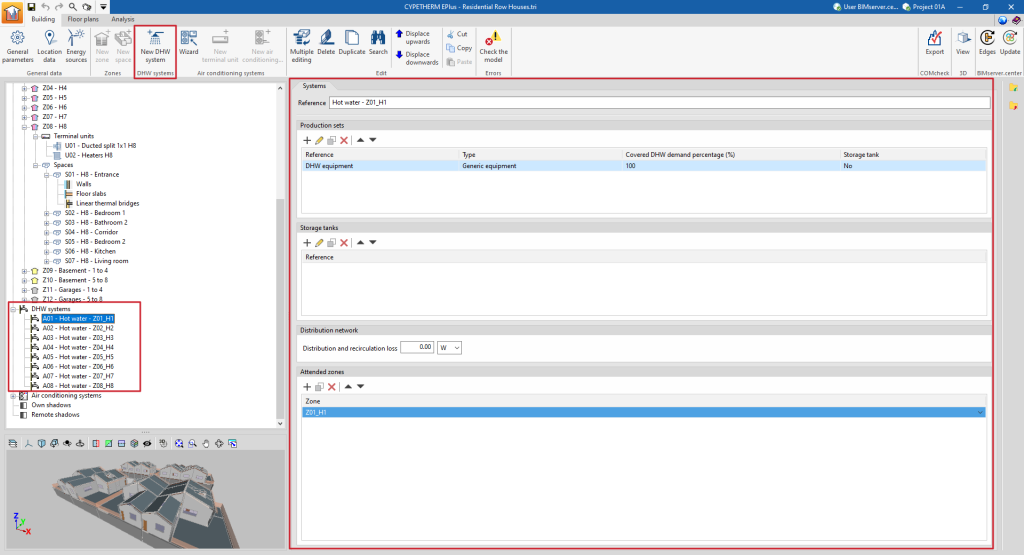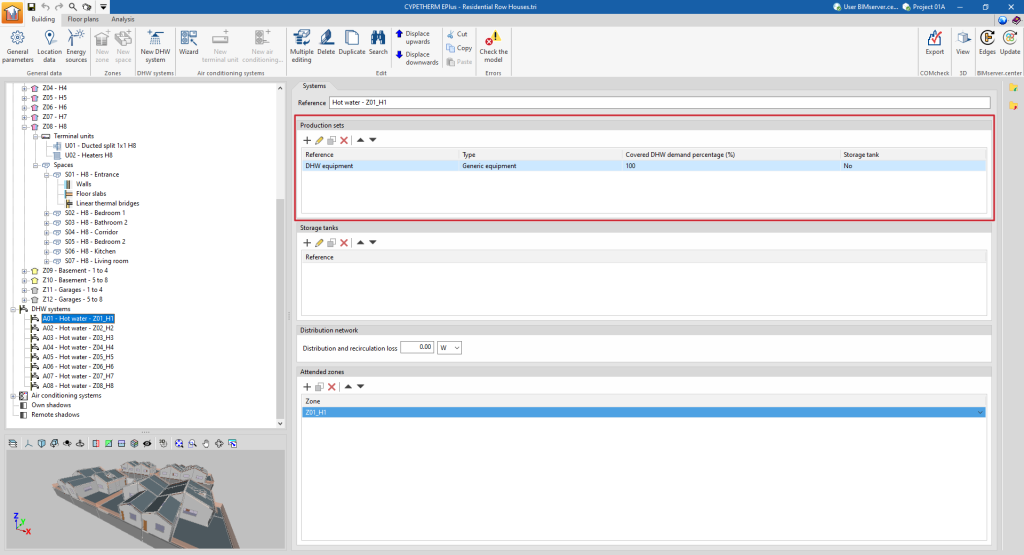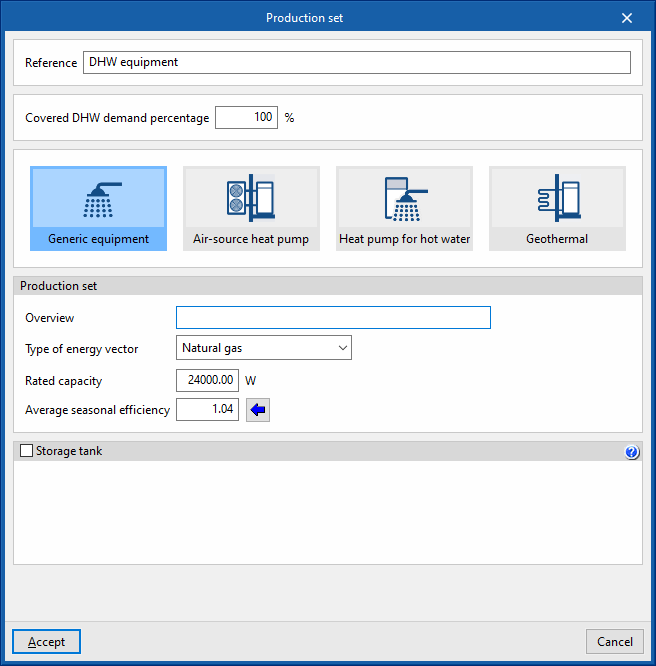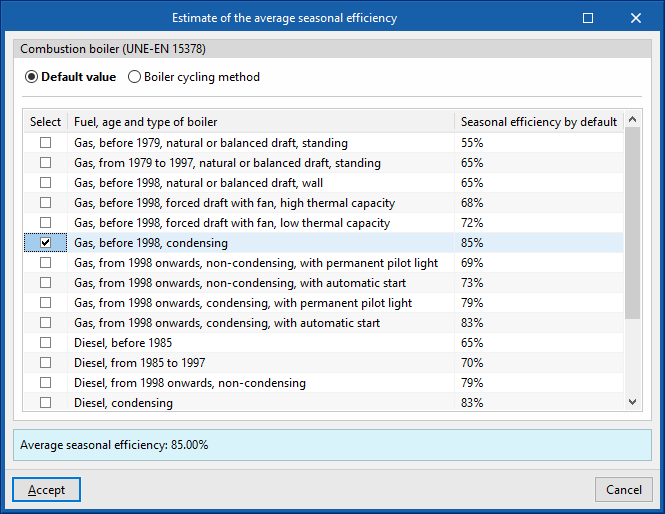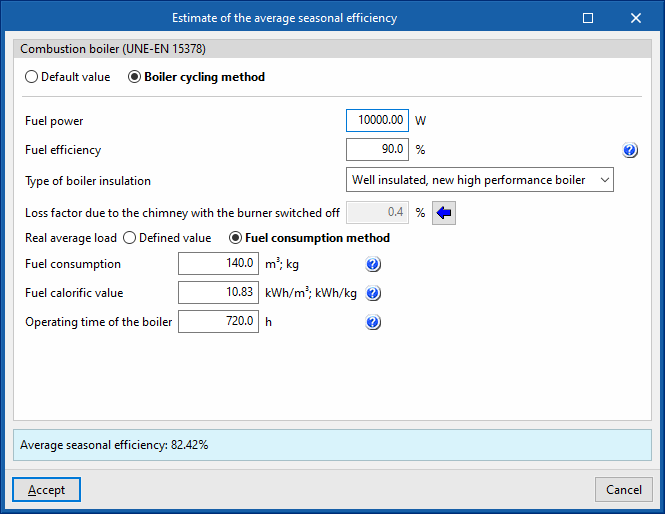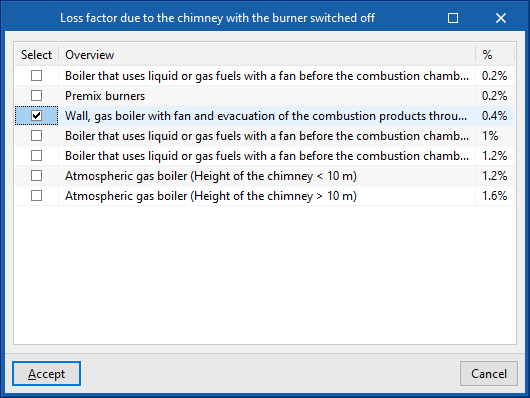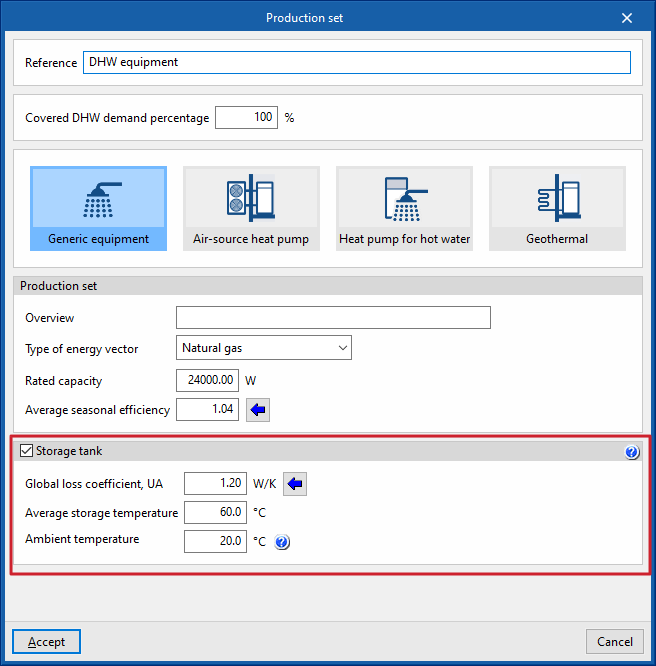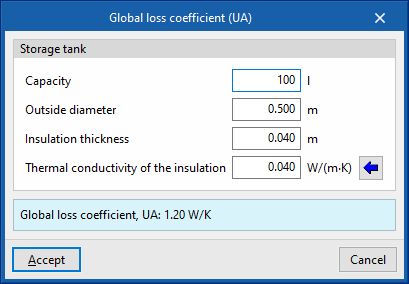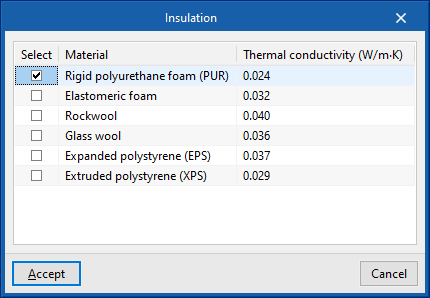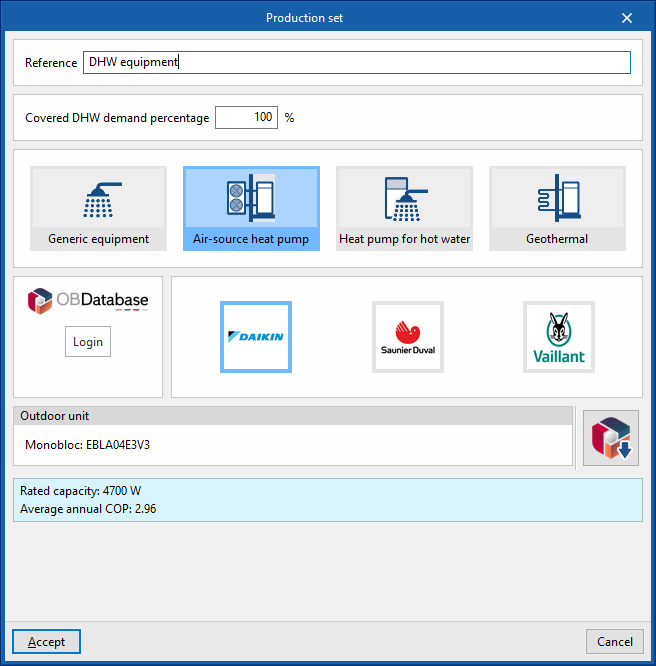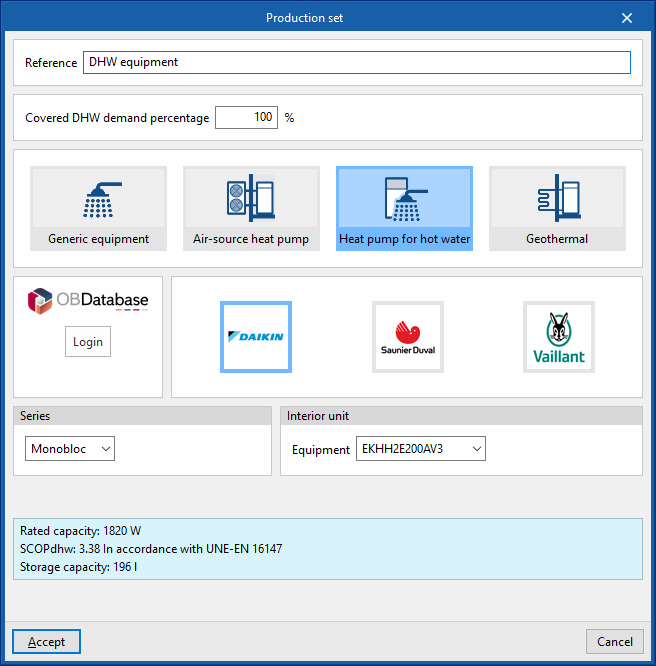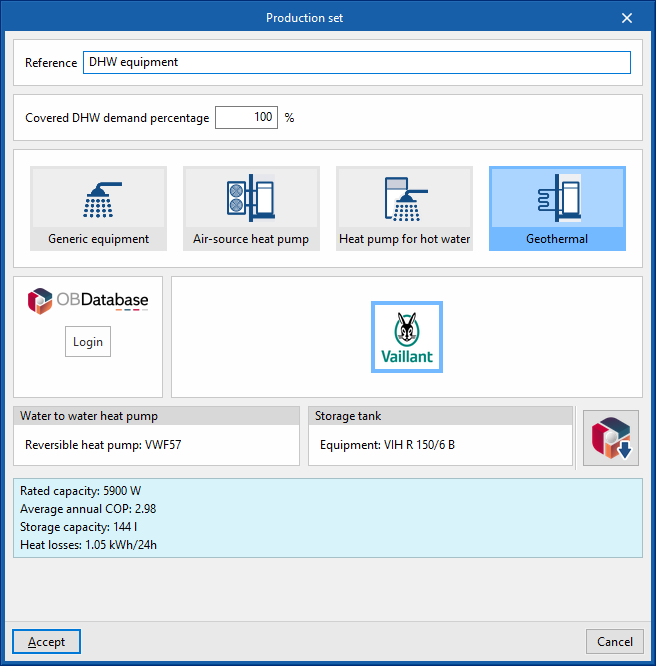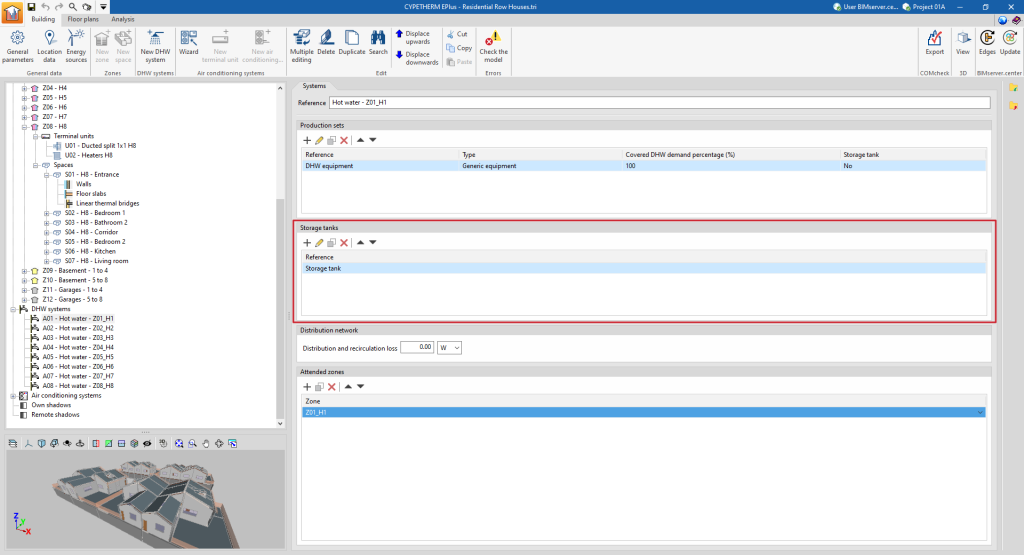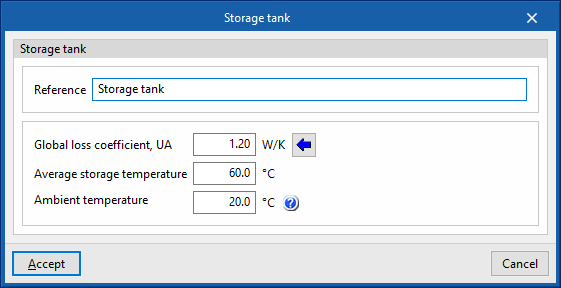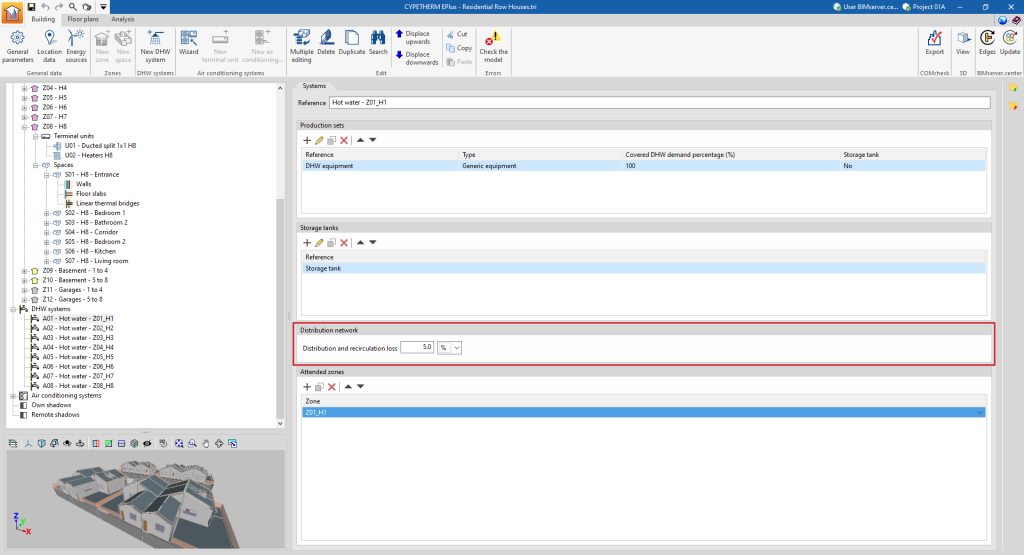Entering and editing DHW systems
The systems responsible for producing domestic hot water (DHW) for the building are defined in the "DHW systems" section of the tree diagram in the left-hand side panel of the "Building" tab.
A DHW system consists of a set of DHW production equipment and, optionally, a set of storage tanks.
Defining DHW systems
The definition of the DHW systems depends on the option chosen in the "Daily DHW demand" section under "General parameters" in the top toolbar of the "Building" tab.
Defining a single DHW system for the whole building
If "Total building demand" has been chosen, users can define a single DHW system to meet this demand.
Then, to define the DHW system, select "DHW systems" in the diagram of the building and add the production equipment and storage tanks in the "Systems" panel in the main area.
Defining multiple DHW systems covering one or more thermal zones
If "Demand by thermal zone" has been chosen, more than one system can be defined and the zones covered by each system can be selected.
Then, to add a new DHW system, select "DHW systems" in the building diagram and click on the "New DHW system" option in the "DHW systems" group in the top toolbar.
Then, to add a new DHW system, select "DHW systems" in the building diagram and click on the "New DHW system" option in the "DHW systems" group in the top toolbar.
Defining systems using the wizard
DHW systems can also be defined together with air-conditioning systems by using the "Wizard" available in the "Air-conditioning systems" group in the top toolbar.
Production sets
The "Production equipment" section provides a report containing the definition of the equipment that supplies the DHW demand assigned to the system.
DHW production equipment requires the following parameter to be defined:
- Covered DHW demand percentage
The part of this demand covered by each piece of equipment must be specified. The set of production equipment defined in the system must cover the entire DHW demand, i.e. the sum of the percentages must be 100%.
Then, the type of DHW production equipment must be selected from the following:
Generic equipment
Simulates any DHW production equipment on the basis of the energy vector used and its seasonal average performance.
- Production set
- Description
- Type of energy vector (Electricity / Natural gas / Diesel / LPG / Coal / Biomass / Densified biomass (pellets)
- Rated capacity
This data is not involved in the energy simulation and is only used for the reports. - Average seasonal efficiency
A wizard is provided to calculate the seasonal average efficiency of combustion boilers, according to UNE-EN 15378. This can be done as follows:- Default value
Imports the "Seasonal efficiency by default" depending on the selected "Fuel, age and type of boiler" (Table B.3 UNE-EN 15378). - Boiler cycle method
Used to calculate the boiler cycle method (Annex N UNE-EN 15378), which calculates the seasonal efficiency by means of a more accurate estimation if technical and consumption data of the equipment are available:- Combustion boiler
- Fuel efficiency
In existing installations, this data is obtained from a combustion analysis carried out during the periodic inspection of the boiler. If this data is not available, the efficiency value of the boiler can be used, which will give conservative results. - Type of boiler insulation (Well insulated, new high performance boiler / Well insulated and maintained / Old boiler with average insulation / Old boiler with bad insulation / Not insulated)
- Loss factor due to the chimney with the burner switched off
This value can be imported with the wizard on the right depending on the type of boiler and its installation. - Real average load
This value can be defined directly or obtained from the fuel consumption method.- Defined value
- Fuel consumption method
- Fuel consumption
The actual fuel consumption must be expressed in the same units (volumetric or mass) in which the calorific value of the fuel is expressed. - Fuel calorific value
The lower or upper calorific value of the fuel is given, depending on the value used to express the combustion power. This must be expressed in the same units (volumetric or mass) in which the fuel consumption is expressed. - Operating time of the boiler
The operating time is the number of hours during which the boiler has been in service, for the time period to which the fuel consumption refers.
- Fuel consumption
- Default value
Optionally, the characteristics of an integrated accumulator or an accumulator associated with the production equipment can be defined. The losses associated with the accumulation will be assigned to this equipment (and not to all the equipment in the system) and covered by it. This option can be used to define equipment such as the electric boiler.
The data required on the accumulators associated with the production equipment is as follows:
- Acumulador (opcional)
- Accumulator tank (optional)
- Capacidad
Volumen del acumulador. - Diámetro exterior
Diámetro exterior del acumulador. - Espesor del aislamiento
Espesor del aislamiento en la carcasa del acumulador. - Conductividad térmica del aislamiento
Este valor se puede importar a partir del material seleccionado en el asistente a la derecha.
- Capacidad
- Ambient temperature
- Average ambient temperature of the room where the DHW storage tank is installed.
- Accumulator tank (optional)
Manufacturer's equipment: air-source heat pump, heat pump for hot water, geothermal
The "Air-source heat pump", "Heat pump for hot water" and "Geothermal" options can be used to cover the demand for hot water and offer, under the logos of different manufacturers, the possibility of selecting the equipment from their commercial catalogues. The characteristics of this equipment are fully defined within the program based on the data provided by the manufacturers.
The options available in its editing panels are as follows:
- Connection to Open BIM Database
Logs into the Open BIM Database. - Manufacturer selection
Selects the desired manufacturer. - Importing manufacturer data
This option, located on the right-hand side of the window, is used to import equipment data from one of the available manufacturers by selecting the catalogue and the desired product.
Accumulator tanks
The "Accumulator tanks" section provides a report containing the definition of the DHW tanks or storage tanks associated with the system, in order to account for their heat losses in the calculation of the DHW energy demand. These heat losses will be compensated by the set of production equipment defined within the DHW system.
When entering or editing a DHW storage tank, the following parameters must be specified:
- Reference
- Global loss coefficient, UA
A wizard is provided to calculate the UA value of the storage tank from its insulation characteristics, according to the Spanish Institute for Energy Diversification and Saving (IDAE) document "Guía técnica: Diseño y cálculo del aislamiento térmico de conducciones, aparatos y equipos".- Capacity
Accumulator tank volume. - External diameter
External diameter of the accumulator tank. - Insulation thickness
Thickness of the insulation in the accumulator tank casing. - Thermal conductivity of the insulation
This value can be imported from the material selected in the wizard on the right.
- Capacity
- Average storage temperature
Average temperature of the water accumulated in the equipment. - Ambient temperature
Average ambient temperature of the room where the DHW storage tank is installed.
Distribution network
The "Distribution network" section can define the distribution and recirculation losses associated with the DHW system, in order to account for them in the calculation of the DHW energy demand:
- Distribution and recirculation loss
These losses can be defined as a constant value in W, or as a percentage of the DHW energy demand of the zones covered by the DHW system.


